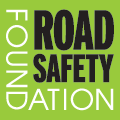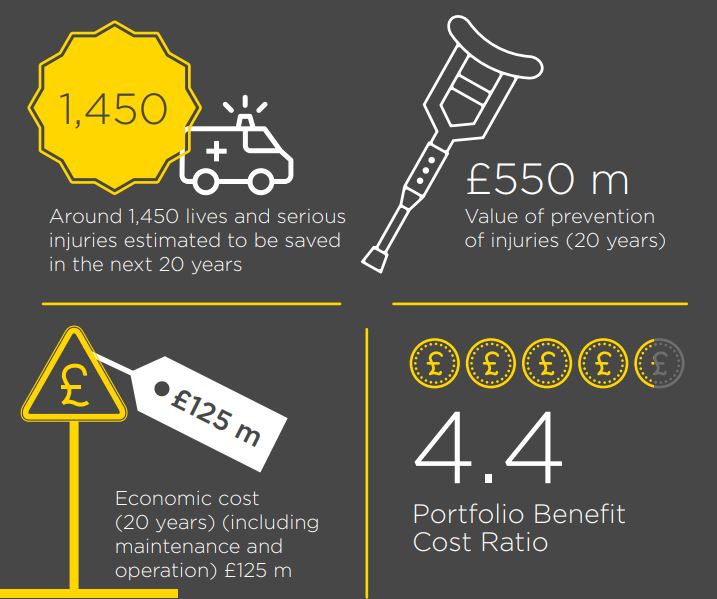SAFER ROADS FUND RESULTS
The Safer Roads Fund was established to treat the 50 highest risk local A road sections in England with remedial road safety engineering interventions. As a result £100 million has been committed by the Department for Transport across 48 schemes. Together these schemes are set to prevent around 1,450 fatal and serious injuries over the next 20 years. The value of prevention for the schemes is £550 million compared with the whole life cost of treatments of £125 million. The Benefit to Cost ratio for this portfolio of roads is 4.4, meaning that for every £1 invested, £4.40 is returned in terms of societal benefit. This demonstrates how road safety interventions can compete favourably with other major transport projects.
The work programme was unique because it used a proactive approach to work out how to reduce risk on a road. Traditionally, steps are taken to improve safety after a crash has occurred, while the Safe System approach uses road engineering to try and prevent crashes from happening in the first place.
The £100 million commitment across the 48 schemes will provide:
- 436 miles of road being targeted overall
- 300 improved bends
- 290 miles of improved roadside shoulders
- 225 improved junctions
- 150 miles of improved speed limits, enforcement and traffic calming
- 135 new or improved pedestrian crossings
- 90 miles of cleared or protected roadsides – e.g. crash barriers
- 90 miles of improved visibility and signing
- 80 miles of improved medians (hatching/wide centrelines)
- 70 miles of improved road surfaces
- 20 miles of new or improved cycle facilities
- 10 miles of new or improved footpaths
Many of the councils submitting proposals to the DfT for money from the Safer Roads Fund worked with the Road Safety Foundation to use the International Road Assessment Programme (iRAP) tools to take a proactive risk management approach. This involved video surveying the roads, coding road features known to relate to crashes and their severity and using iRAP tools to direct the development of treatments.
Two reports are available for download:

